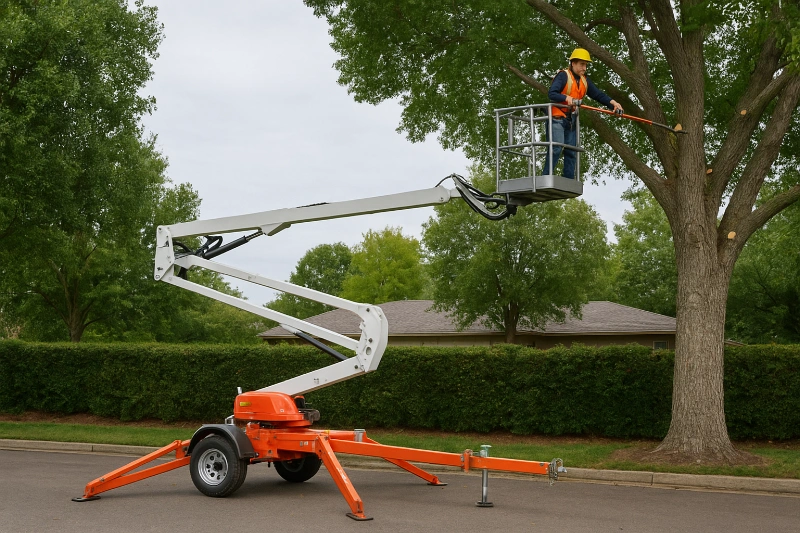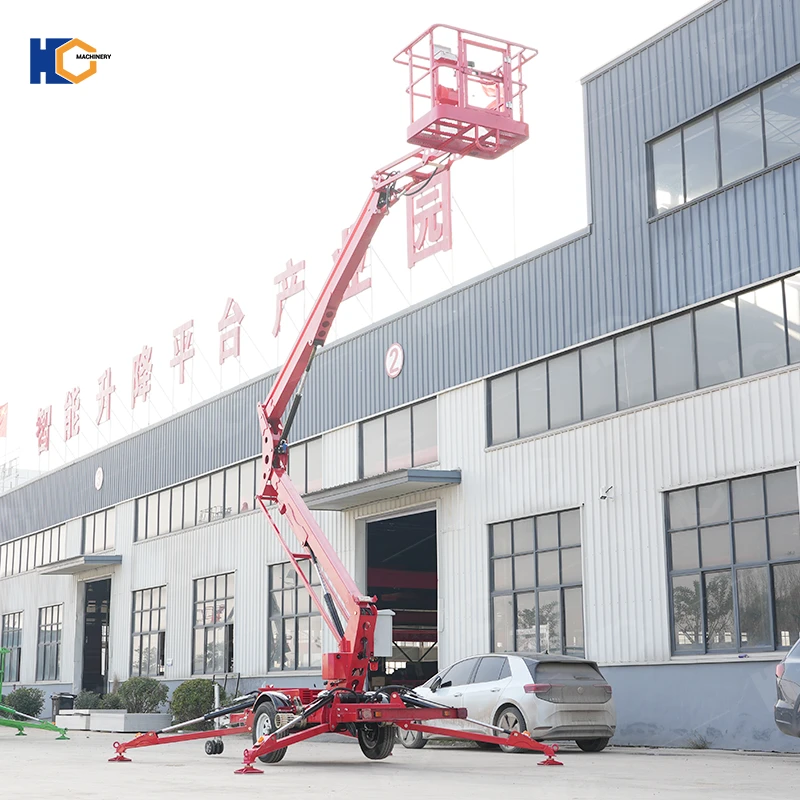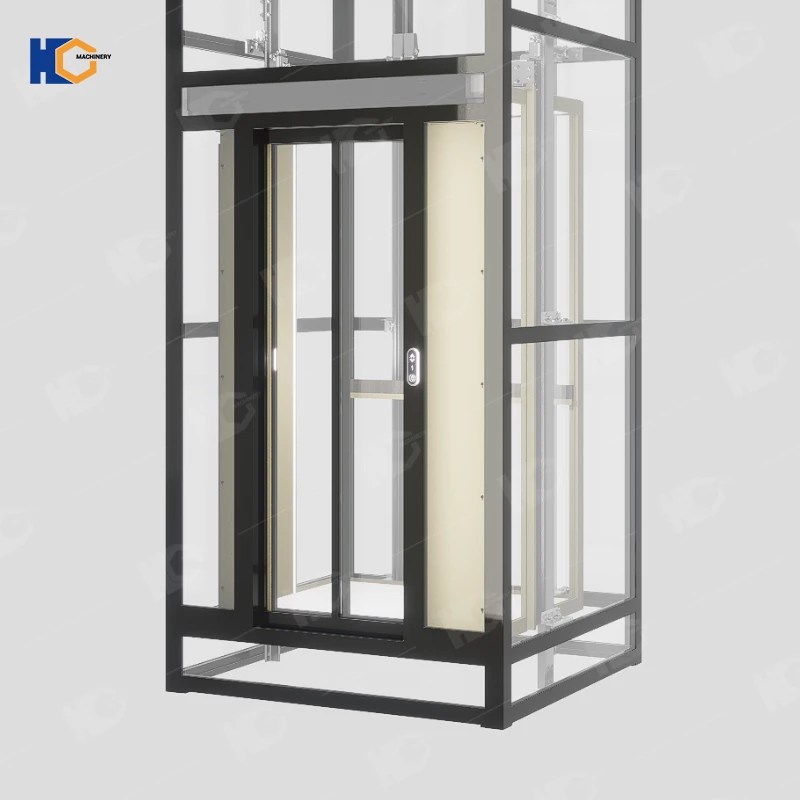Tree care and maintenance are essential tasks for property owners, landscaping companies, and municipalities across the USA. Whether it’s trimming branches, removing hazardous trees, or installing lights in tall trees, working at height requires safe and efficient access equipment. Among the many aerial lifts available, towable boom lifts have become a popular choice for tree work due to their mobility, cost-effectiveness, and versatility.
This article explores the advantages of towable boom lifts for tree work, their growing popularity in the U.S. market, and provides a step-by-step guide on how to safely and effectively use them for tree care.
What Are Towable Boom Lifts?
Towable boom lifts, also called trailer-mounted lifts, are lightweight aerial platforms that can be easily towed by a pickup truck or SUV. They feature a hydraulic boom arm capable of vertical and horizontal reach, allowing workers to safely access branches at varying heights and angles.
Key Specs of Towable Boom Lifts (Typical Ranges)
Working Height: 30–60 ft (9–18 m)
Horizontal Reach: 15–30 ft (4.5–9 m)
Platform Capacity: 200–450 lbs (90–200 kg)
Weight: 2,000–4,000 lbs (900–1,800 kg)
Setup Time: 5–10 minutes with stabilizing outriggers
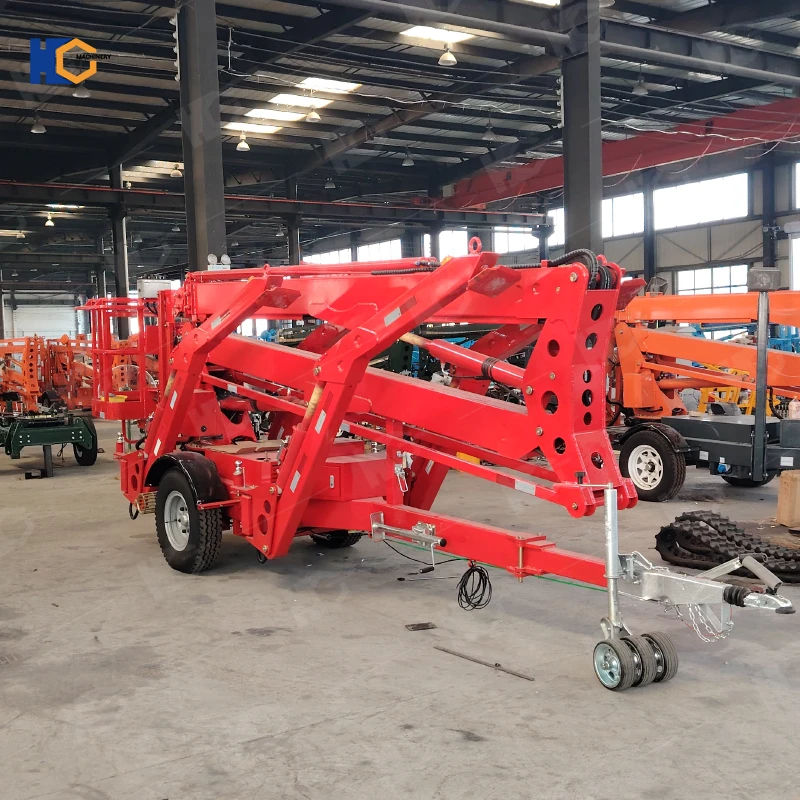
Why Towable Boom Lifts Are Ideal for Tree Work
Tree maintenance often requires access to awkward, elevated, and obstructed areas. Towable boom lifts provide several distinct advantages for arborists and property owners.
1. Mobility and Easy Transport
Unlike bulky self-propelled lifts, towable boom lifts can be hitched to a standard vehicle. Landscapers and tree care contractors in the U.S. appreciate the ability to move quickly between job sites without needing special trailers.
2. Cost-Effective Investment
Towable boom lifts are significantly cheaper than self-propelled models. A new towable lift in the USA costs around $12,000–$25,000, compared to $40,000+ for self-propelled lifts. For tree care companies, this lowers overhead while still ensuring access to heights.
3. Compact Size for Residential Work
Most tree work in America happens in suburban backyards, where access is restricted by fences or driveways. Towable lifts can fit into tight spaces and be positioned closer to trees compared to larger lifts or cranes.
4. Height and Reach
With working heights of up to 60 ft, towable lifts can handle tall residential trees, which often range from 30–50 ft in suburban landscapes. The horizontal reach also helps in navigating around tree trunks without constant repositioning.
5. Stability and Safety
Outriggers provide stability even on uneven ground. This makes tree trimming safer compared to ladders or climbing methods, reducing the risk of falls.
6. Versatility
Besides tree work, towable lifts can be used for painting, building maintenance, and event setups—adding value for contractors who want multi-use equipment.
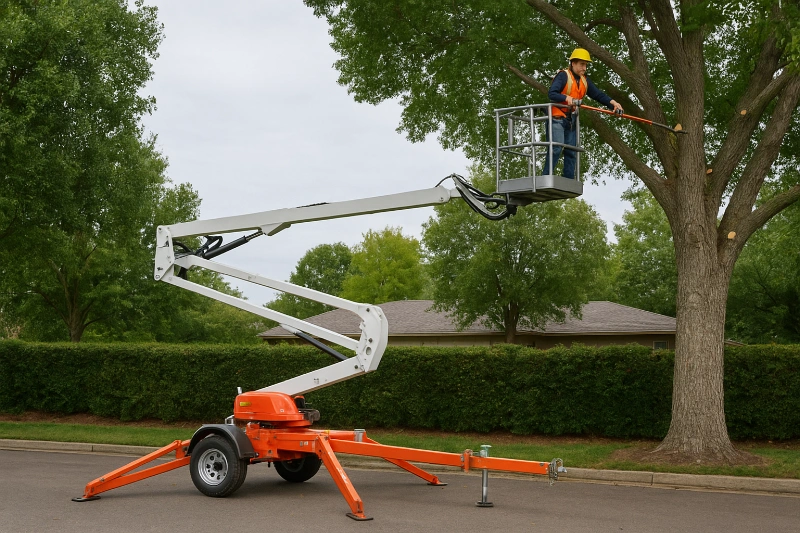
Popularity of Towable Boom Lifts in the USA
The U.S. market has seen steady growth in towable boom lift sales and rentals, especially among landscaping and small contracting businesses.
Market Insights
According to IBISWorld data, landscaping services in the USA generated over $130 billion in 2023, with tree care being one of the most common services.
Towable lifts are among the top rented aerial lifts from companies like Home Depot Rental, United Rentals, and Sunbelt Rentals.
Rental rates average $200–$400 per day or $1,200–$1,800 per month, making them accessible for small businesses and homeowners.
This affordability and accessibility have led to a surge in demand, particularly in states with dense tree coverage such as California, Florida, Texas, and New York.If you want to purchase lift for repairing garden trees, you can click High-end Towable Boom Lifts in America for Aerial Work, which is a high-end product from our factory.
Step-by-Step Guide: Using Towable Boom Lifts for Tree Work
To maximize efficiency and safety, here’s a practical guide for using a towable boom lift in tree maintenance.
Step 1: Site Assessment
Inspect the area around the tree for obstacles, uneven ground, and overhead power lines.
Ensure there is enough clearance for setting up outriggers.
Check soil stability if working on soft ground.
Step 2: Position the Lift
Tow the boom lift close to the tree, considering both vertical and horizontal reach needs.
Unhitch the lift and position it at a safe distance from tree branches to prevent contact during lifting.
Step 3: Deploy Outriggers
Extend and level the outriggers on all four corners.
Use outrigger pads if the ground is soft to avoid sinking.
Confirm the lift is stable before raising the boom.
Step 4: Safety Checks
Wear a safety harness with a lanyard attached to the lift’s anchor point.
Test hydraulic controls for smooth up-and-down operation.
Check emergency lowering function before use.
Step 5: Position the Platform
Use the controls to raise the boom arm to the required height.
Extend horizontally to reach over branches if needed.
Ensure the platform remains level and secure.
Step 6: Tree Trimming or Removal
Use appropriate tools (chainsaw, pole saw, pruning shears).
Cut smaller branches first to reduce weight load.
Avoid overreaching from the platform; reposition the lift instead.
Always maintain two points of contact with tools to avoid accidents.
Step 7: Lowering and Repositioning
Once one side of the tree is done, lower the boom completely before moving.
Tow or push the lift to the next position as needed.
Step 8: End of Work
Retract outriggers fully before towing.
Store the lift in a secure place.
Perform routine maintenance checks (hydraulic fluid, tires, and safety features).
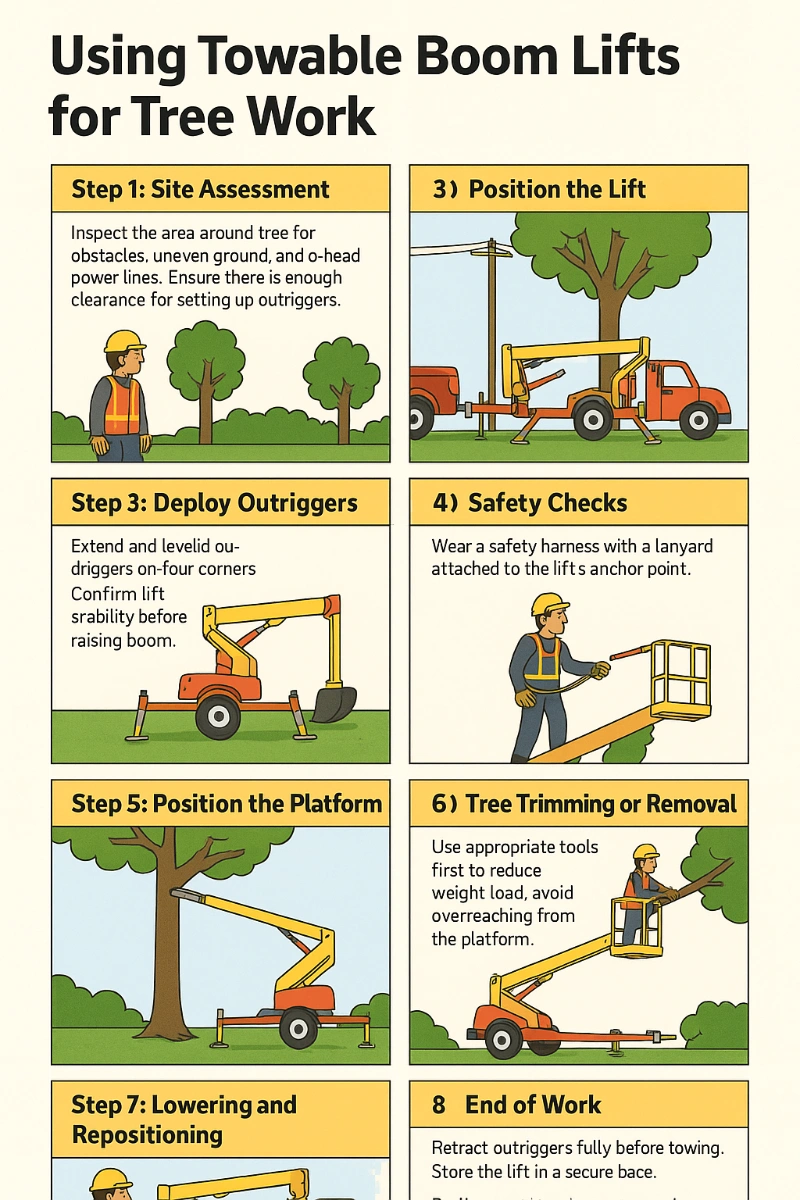
Safety Considerations for Tree Work with Towable Lifts
Never exceed the weight limit (worker + tools).
Avoid working in high winds (over 28 mph).
Keep the lift at least 10 ft away from power lines.
Do not allow multiple workers on small platforms.
Ensure only trained personnel operate the lift.
Pros and Cons of Towable Boom Lifts for Tree Work
Pros
✅ Affordable purchase and rental cost
✅ Easy transport with pickup trucks
✅ Compact and versatile for residential work
✅ Stable and safe with outriggers
✅ Ideal height for suburban trees
Cons
Slower setup compared to self-propelled lifts
Limited platform capacity (1 person + tools)
Requires towing vehicle for repositioning
Not ideal for very tall commercial trees over 60 ft
946926.webp)
Tips for Choosing the Right Towable Boom Lift for Tree Work
Height Requirements – Choose a model that exceeds your tallest tree by at least 5 ft.
Horizontal Reach – Important for reaching branches without constant repositioning.
Weight Capacity – Ensure it supports you and your tools safely.
Power Source –
Battery-powered for quieter residential areas.
Gas-powered for remote outdoor sites.
Terrain Compatibility – Adjustable outriggers for uneven ground.
Transport Vehicle – Match the lift’s towing weight with your vehicle’s rating.
Safety Features – Harness anchor points, emergency lowering system, outrigger alarms.
Brand Reputation – Choose lifts from trusted U.S. brands like Genie, JLG, or Haulotte.
New vs. Used – Used lifts are cheaper but inspect hydraulics and safety systems.
Rental vs. Purchase – If you use it less than 20 times a year, renting may be more cost-effective.
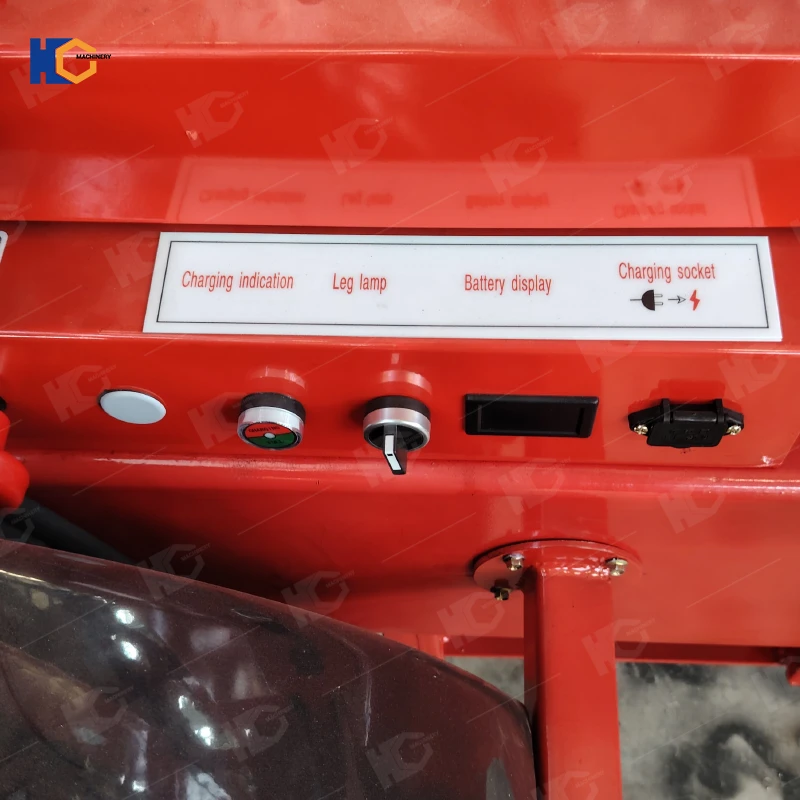
Conclusion
Towable boom lifts are a practical, affordable, and safe solution for tree care in the USA. With working heights of up to 60 ft, easy towing, and compact design, they are well-suited for residential landscaping and small contracting jobs.
For American tree care businesses and property owners alike, towable lifts provide the right balance between cost and functionality, making them one of the most popular aerial work platforms in the U.S. market today.
By following the step-by-step usage guide and safety practices outlined above, you can maximize efficiency and reduce risks while trimming, pruning, or removing trees.
